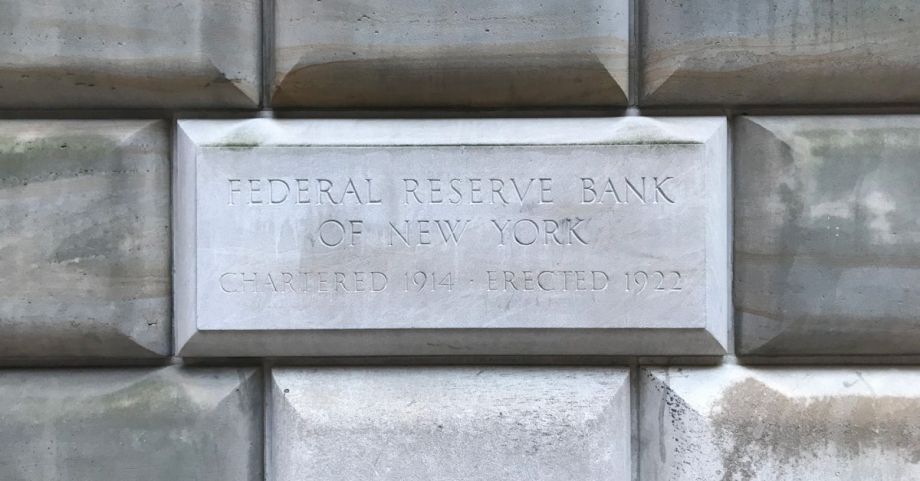In March, as part of its response to COVID-19, the Federal Reserve announced it would for the first time in its history enter the municipal bond market — a $4 trillion market financing everything from transportation infrastructure to affordable housing to schools to economic development. As of June 15, just one state had sold any bonds to the Fed.
That state was Illinois, which sold a $1.2 billion “tax-anticipation note” to the Municipal Lending Facility, managed by the Federal Reserve Bank of New York. The state owes 3.82 percent in interest to the facility, or about $45.8 million, with principal and interest due for repayment in one year.
Some economists have been saying the Federal Reserve should be making many more municipal bond market purchases as part of its normal functioning, not just as part of a crisis response. In addition to helping the Fed perform its mandated function of stabilizing the financial system, they say it would have huge benefits for cities, among other things making it easier to finance public transit, public housing, climate resilience projects and invest in historically disinvested communities.
For now, in response to the pandemic, the Fed’s Municipal Lending Facility is offering to buy up to $500 billion in municipal bonds issued by states, eligible cities, or other public entities like housing or transportation authorities that typically issue municipal bonds.
As groundbreaking as it is for the Fed to step into the $4 trillion municipal bond market, it’s still not going nearly far enough to make a meaningful difference in response to this pandemic, according to Amanda Kass, associate director of the Government Finance Research Center at the University of Illinois at Chicago.
“I think [the Municipal Lending Facility] strikes me as a drop in the bucket in terms of what state and local governments are facing in terms of shortfalls,” says Kass.
Kass anticipates the hurt from combined state and local government budget cuts, with or without help from the Fed, will fall hardest on Black, Hispanic and other communities of color, because the most likely first budget cuts are funding streams that disproportionately benefit those communities, in her analysis.
“In this moment where people are demanding accountability for issues of racial equity, it’s important to think about,” says Kass.
Many city and most state fiscal years just ended, with budgets just passed at the end of June. Nearly all cities and states are bound by balanced budget requirements in city charters and state constitutions. They go to the municipal bond market in order to finance big-ticket capital expenses like transportation, housing, school construction, or utilities. They also frequently go to the municipal bond market to finance expenses during the periods between quarterly- or bi-annual property tax or other tax payments. Selling bonds to the Fed would fall under this type of financing, in anticipation of a recovery period when taxes and other revenues return to normal. It’s still anyone’s guess as to when that will be.
The Fed’s Municipal Lending Facility limits what each unit of government can borrow, which units of government are eligible, and what borrowers may do with the proceeds.
Each issuing entity may only borrow an amount up to 20 percent of their 2017 revenue, and only on terms up to three years. Although all 50 states plus the District of Columbia are eligible, only around 250 cities and counties across the country are eligible because the Fed requires cities to have at least 250,000 residents, and counties at least 500,000.
Initially those thresholds were much higher, leaving only ten cities and 15 counties across the country eligible by population at all. The Fed’s idea was to buy only from cities and counties with the highest probability of paying back the bonds and not make too much of an incursion into the private market.
But analysts at the Brookings Institution pointed out that under those original constraints, none of the 35 cities with the highest proportion of Black people were eligible to sell bonds to the Fed. After hearing feedback from the public and from members of Congress, the Fed lowered the eligible city and county thresholds at the end of April. St. Louis, Detroit and Atlanta were among the newly eligible cities.
A state or regional entity can also use the proceeds to help cover eligible expenses for smaller units of government within their jurisdictions. If states used their borrowing capacity to do that, it could help local governments cover existing debt payments that can’t be cut in a crisis, or to ramp up local pandemic response efforts while local economies remain shut down for social distancing purposes. The states would be able to grant those dollars to local governments while repaying the Fed out of state revenue sources.
“Places that might have the greatest need for important services might not have the economic base right now to support the taxes that might be needed to fund those services,” says Kass.
States already do provide a lot of budget aid to local governments. But in a budget crisis, those funding streams are often the first to get cut. Bond rating agencies, whose ratings determine how much interest bond issuers have to pay investors to successfully sell their bonds, actually view it as a positive for states that they can easily reduce costs in a budget pinch by reducing aid to local governments.
Kass has been analyzing what happened to state aid for local governments during the Great Recession. “It’s just anecdotal so far, but what we’re seeing is one way states mitigated their own budget gaps was making cuts to state aid for local governments,” she says.
She gives the example of Wisconsin. Wisconsin gave $731 million to local governments and utilities in 2009, but that was cut to $665 million in 2012, and since 2015 the amount has been steady at $668 million. “It’s a clear case of there was a cut right around the recession and then the dollar amount has been the same, so it’s declining in real dollars,” says Kass.
“Cities, towns that may be the least equipped to absorb a budget shortfall due to COVID-19 are places that are likely majority Black and brown,” says Kass.
The smaller the city, the more severe the potential impact of combined state and local budget shortfalls. Before the pandemic, state aid was just 4 percent of Chicago’s budget, compared to 35 percent of East St. Louis’ budget, according to Kass’ analysis.
Illinois has not yet released disclosure documents for how it plans to use the proceeds of the $1.2 billion tax anticipation note it sold to the Fed. In its disclosure for $800 million in bonds sold to the municipal bond market in May, Illinois says it is using the proceeds of that issuance to make state pension fund payments and fund construction projects under its existing capital plan — most of which consists of transportation infrastructure projects.
Despite the disruption from the pandemic and expected budget shortfalls, the municipal bond market doesn’t seem yet to be slowing down. After a downturn in March, municipal bond market activity is back up to typical levels, according to data from the Municipal Securities Rulemaking Board, which regulates the municipal bond market.
So far, despite anticipated budget shortfalls, a few factors weigh on state and local governments’ decisions about doing so. State governments are coming into this recession with record high rainy-day reserves. Many states may not yet see a need to borrow more money. There’s the general uncertainty of how long the pandemic will last and whether re-openings will go as planned, with some states already sliding backwards.
At Standard & Poors, the world’s largest investment rating agency, Geoffrey Buswick leads a team that monitors ratings for all 50 states plus Guam. In addition to all the above, Buswick points to uncertainty about what states can do with federal aid from the CARES Act.
Federal grant dollars are always preferable to borrowing, but when it’s not clear what federal grants will cover, it’s not clear what states need to plan to borrow to cover. The Fed’s Municipal Lending Facility can also cover one thing that Buswick notes no federal COVID-19 aid is currently able to cover — revenue replacement.
“What we’re expecting to see over the next month is in D.C. a continued discussion on can existing CARES Act money be loosened, is there an infrastructure bill that also includes housing, and can there be revenue replacement,” Buswick says.
Interest rates also factor in, and rating agencies have a lot to do with that. Right now, according to Fitch, another ratings agency, the Fed’s Municipal Lending Facility is charging higher interest rates than most cities and states can get from the market. But cities and states with lower ratings are finding the Fed’s terms more attractive. Illinois, which chronically has the worst credit rating of any state, is paying nearly 6 percent on the $800 million in bonds it sold to investors in May, compared to the 3.82 percent it’s paying to the Fed.
And that’s just the short-term uncertainty. Fundamental changes in work life could mean huge swings in where spending happens and therefore what revenues look like in the long-term.
“If a large segment of the population is suddenly now working from home permanently, what does that mean for public transportation, for restaurants,” says Kass. “Think about downtown Chicago, lots of lunch places in the Loop, if people aren’t working as much there anymore does that translate into permanent decline in revenue collection” — meaning a drop in sales and property taxes paid by downtown businesses.
Despite obvious long-term concerns, the immediate pandemic hasn’t offered much time for consideration. “I don’t know how many places are thinking about what permanent societal changes are occurring and what would it mean for revenue collection,” says Kass.
The true turmoil may be yet to come. Marian Zucker leads a team at S&P that monitors ratings for around 750 state and local housing agencies and public housing authorities across the country. In the near term, Zucker notes that housing agencies are entering this recession with bigger cash cushions than they did entering the Great Recession. “I think generally housing agencies are comfortable and confident that they can make it through this recession without a severe collapse in their ability to function,” Zucker says.
But the longer the pandemic shut down lasts, the more those cash cushions erode. “From my perspective, I’m very curious to see what happens after July once the enhanced unemployment benefits expires,” Zucker says.
Extensions of existing federal aid like direct stimulus payments — so that homeowners can keep paying their mortgages or affordable housing tenants can keep paying their rents — would be much more desirable than housing agencies having to sell bonds to the Fed or market investors to cover their costs, including payments to existing housing agency bond buyers. But there’s no guarantee even that will still be an option when the time comes. For now, the Fed’s Municipal Lending Facility is only set up for the very near-term. It’s scheduled to end at the end of this year.
This article is part of The Bottom Line, a series exploring scalable solutions for problems related to affordability, inclusive economic growth and access to capital. Click here to subscribe to our Bottom Line newsletter.

Oscar is Next City's senior economic justice correspondent. He previously served as Next City’s editor from 2018-2019, and was a Next City Equitable Cities Fellow from 2015-2016. Since 2011, Oscar has covered community development finance, community banking, impact investing, economic development, housing and more for media outlets such as Shelterforce, B Magazine, Impact Alpha and Fast Company.
Follow Oscar .(JavaScript must be enabled to view this email address)


















